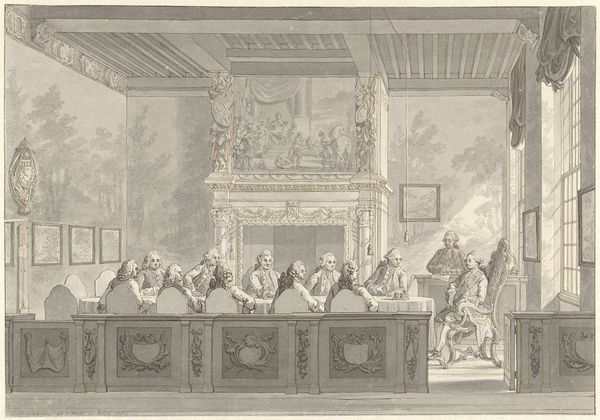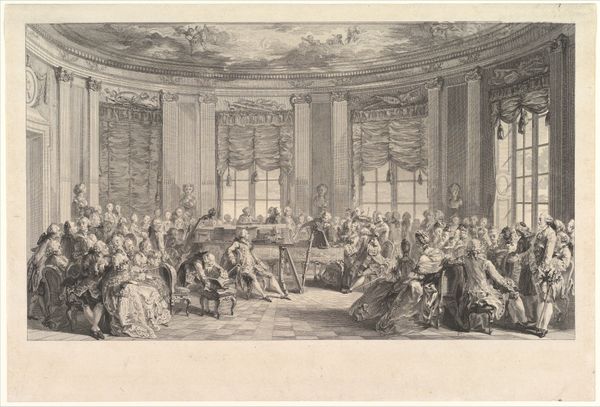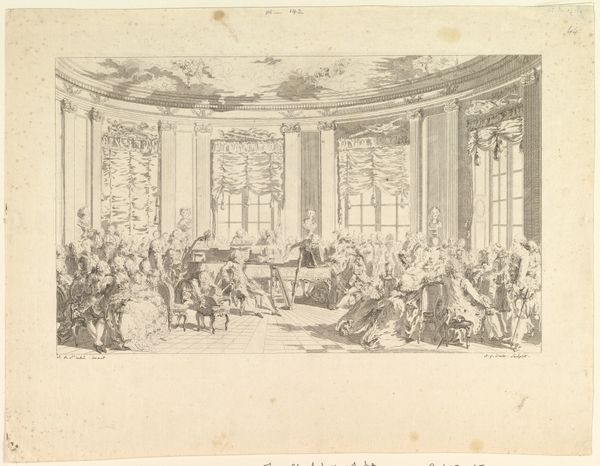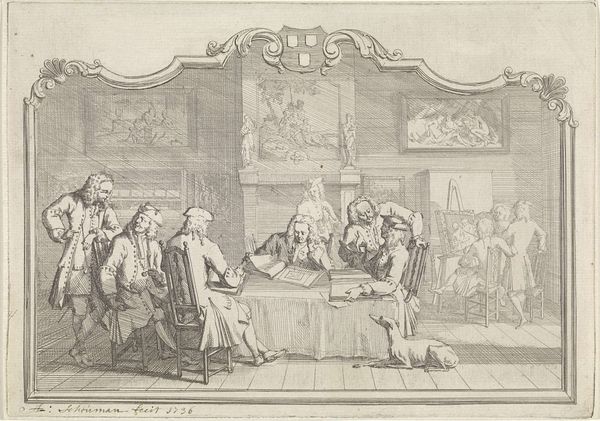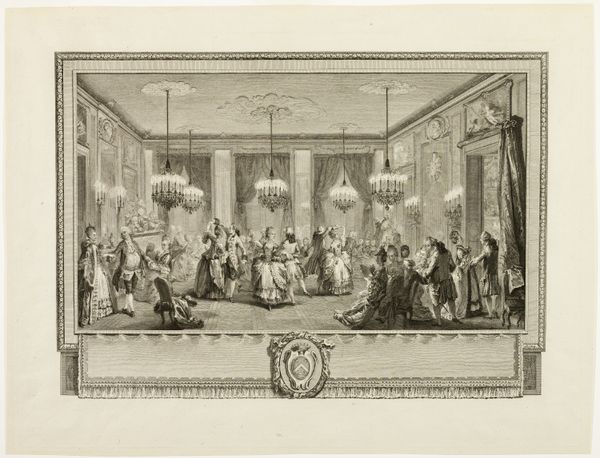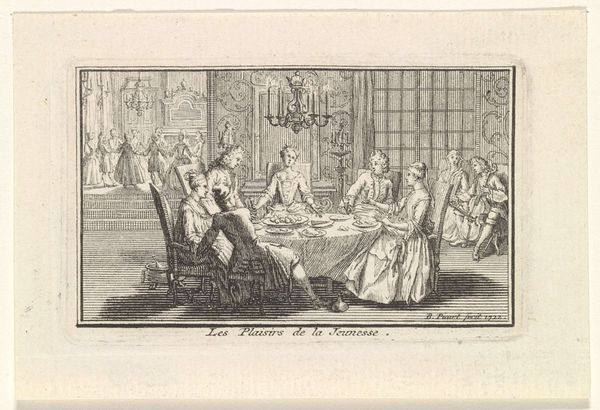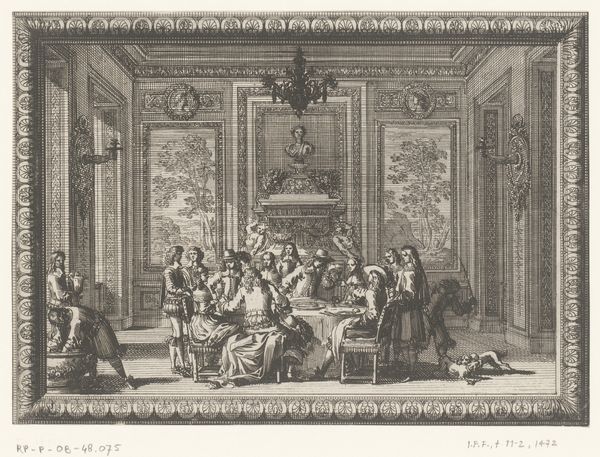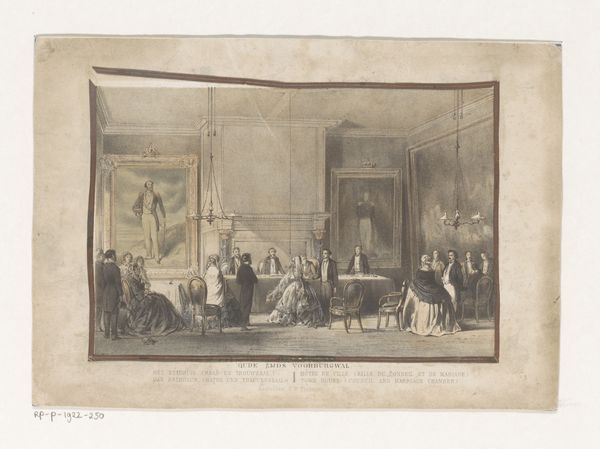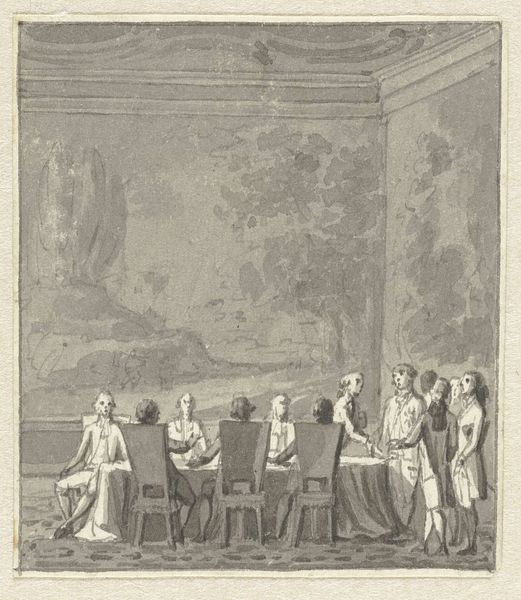
Zittingneming van Willem V in de W.I.C., bij zijn bezoek aan Amsterdam in 1768 1771
0:00
0:00
simonfokke
Rijksmuseum
Dimensions: height 277 mm, width 394 mm
Copyright: Rijks Museum: Open Domain
Curator: What strikes me first about this etching by Simon Fokke, made in 1771, is how...sedate it all seems. The scene captures Willem V's visit to the Dutch West India Company in Amsterdam in 1768. It is on display at the Rijksmuseum. Editor: Sedate is a good word! To me, the circular arrangement, with all eyes fixed on that table, hints at ritual, or perhaps a slightly stifled formality. Everyone is frozen in time like an eternal photograph. Curator: Well, that formality certainly reflects the political climate of the Dutch Republic at that time. Willem V was struggling to maintain control amid growing Patriot unrest, and these displays of power and authority were vital for solidifying his position, regardless of how manufactured they seemed. Editor: Look at the way light is used. It feels deliberately placed to illuminate key figures but not to animate. This heightens the sense of staged theater – all of which communicates a carefully managed image of leadership. The large mantelpiece decorated with lush greenery, behind the table, reminds me of images of kings with backgrounds referencing antiquity, meant to further elevate the present moment. Curator: The imagery of Dutch maritime power would have been very well recognized in that period. The W.I.C. was undergoing immense changes at the time that the image was made as it faced mounting criticism of colonial power. In many ways, that frozen temporality that you mention is deeply telling because these images look powerful, stable, and regal, but only hint at the political realities of that era. Editor: The composition, too. So balanced and considered. Notice the tapestry on the right mirroring the light flooding through the window on the left, that also emphasizes control. Were such displays successful, do you think? Did it affect public perception? Curator: That's hard to gauge directly from an image, of course. However, prints like these were a form of political propaganda that aimed to cement the image of the Stadtholder with power. The fact we are discussing this centuries later tells us that the message has not faded completely! Editor: Perhaps the weight of imagery lies in what endures despite changing realities. Curator: Absolutely. Fokke’s etching reveals as much about the political theater of the era as it does about the historical event itself. Editor: An interesting view onto power, literally and figuratively.
Comments
No comments
Be the first to comment and join the conversation on the ultimate creative platform.
